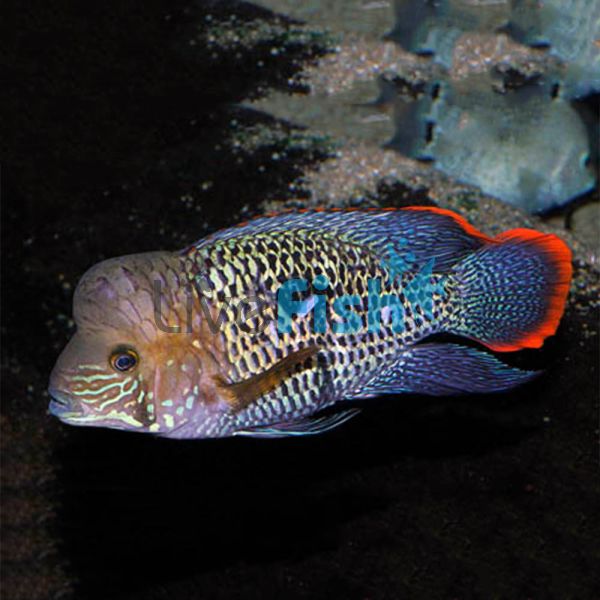Gold Saum - Gold Edge 4cm
Gold Saum - Andinoacara rivulatus
Previously known as the Aequidens rivulatus
- Buy 4 for $13.62 each and save 10%
- Buy 8 for $12.10 each and save 20%
- Buy 12 for $10.59 each and save 30%
Native to Ecuador and Peru, adult Rivulatus are very impressive fish with green-edged scales, and nicely patterned dorsal and tail fins with a wide gold edging. Hardy and easy to keep, they can be territorial, particularly when breeding. One of the more popular larger American Cichlids, they can be kept with hardy species of similar size in large aquaria. Males can grow to 18-20cm, females remain smaller. They start to color up from 5cm onwards.
More than 225 species, with estimates of 300 species, of cichlids, are found throughout South America. An estimated 75% of these inhabit the mighty Amazon River Basin. Cichlids are also found in Central America, where they are well-known for their pugnacious behavior and their stunning colors. Most of this cichlid is large, thus requiring large tanks. These fish inhabit most types of waterways throughout Central America including lakes, streams, rivers, even underground water sources.
Their colorful appearance, the many different species available, their behavior and their breeding are just some of the reasons the Cichlids are one of the most popular aquarium fish.
Due to their aggressive behavior, the tank for cichlids should be as large as possible, with its length being more critical than its height; meaning the longer the better.
In the Cichlid tank, there must be places of refuge. These can be rock caves, large pieces of driftwood, or even inverted flowerpots. Most large species of Cichlids will dig up the substrate material, and occasionally will remove plants from the substrate. The Angelfish, Discus, and the dwarf species Apistogramma all prefer a densely planted tank.
The water temperature should be in the range of 24-28 degrees celsius, slightly higher for the Discus. The diet should consist of live and frozen food of all kinds as well as a large flake staple food. Large specimens can be feed Earthworms, garden Crickets, and kitchen leftovers.
| Scientific Name | Andinoacara rivulatus |
|---|




